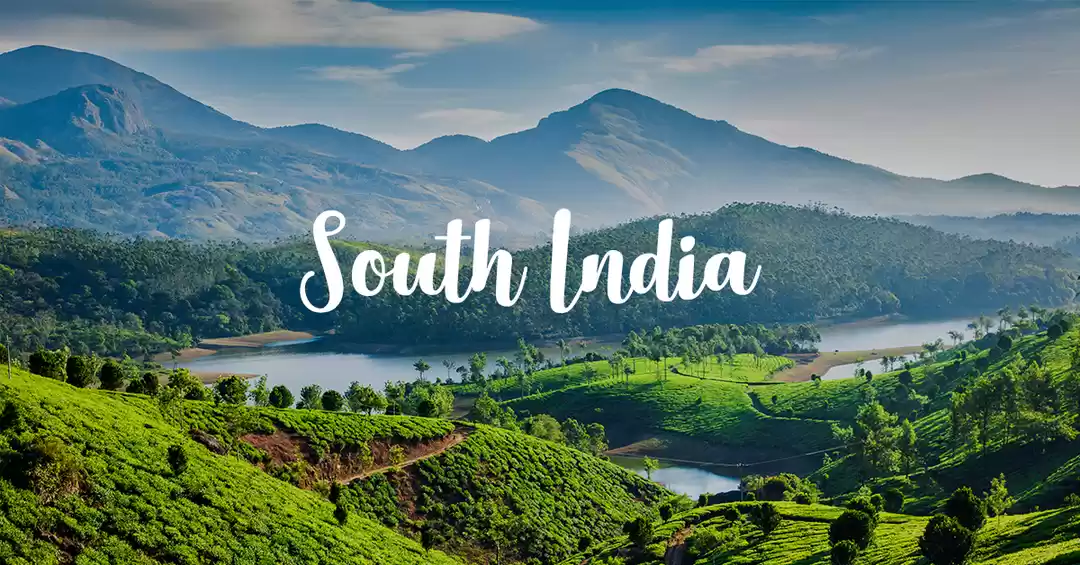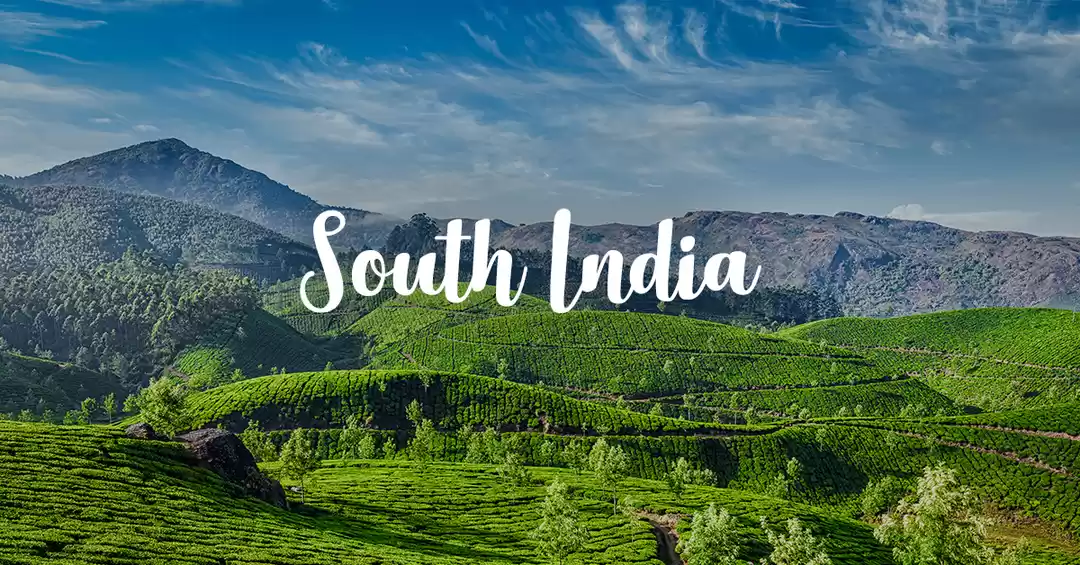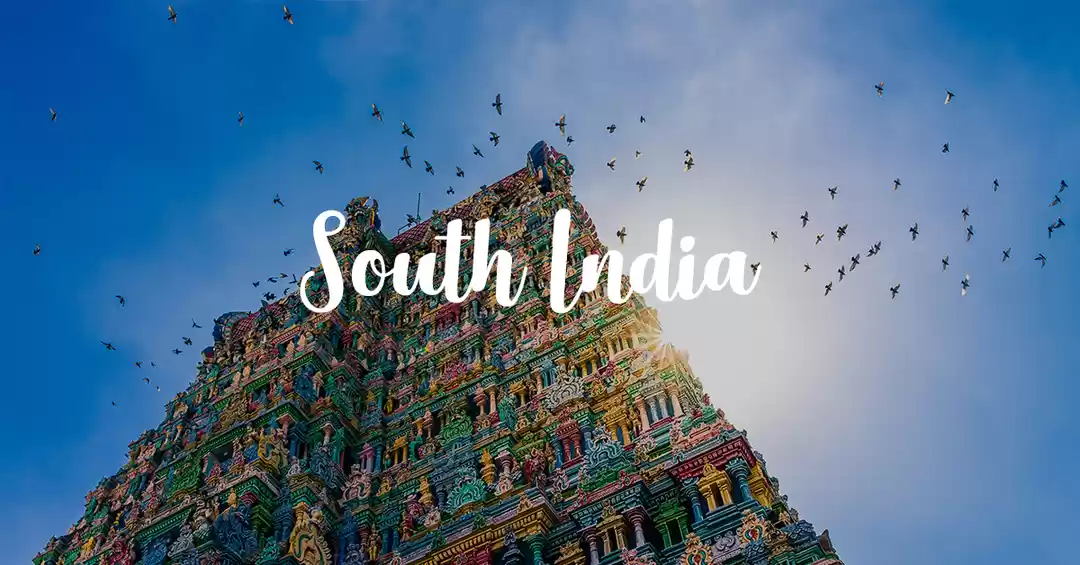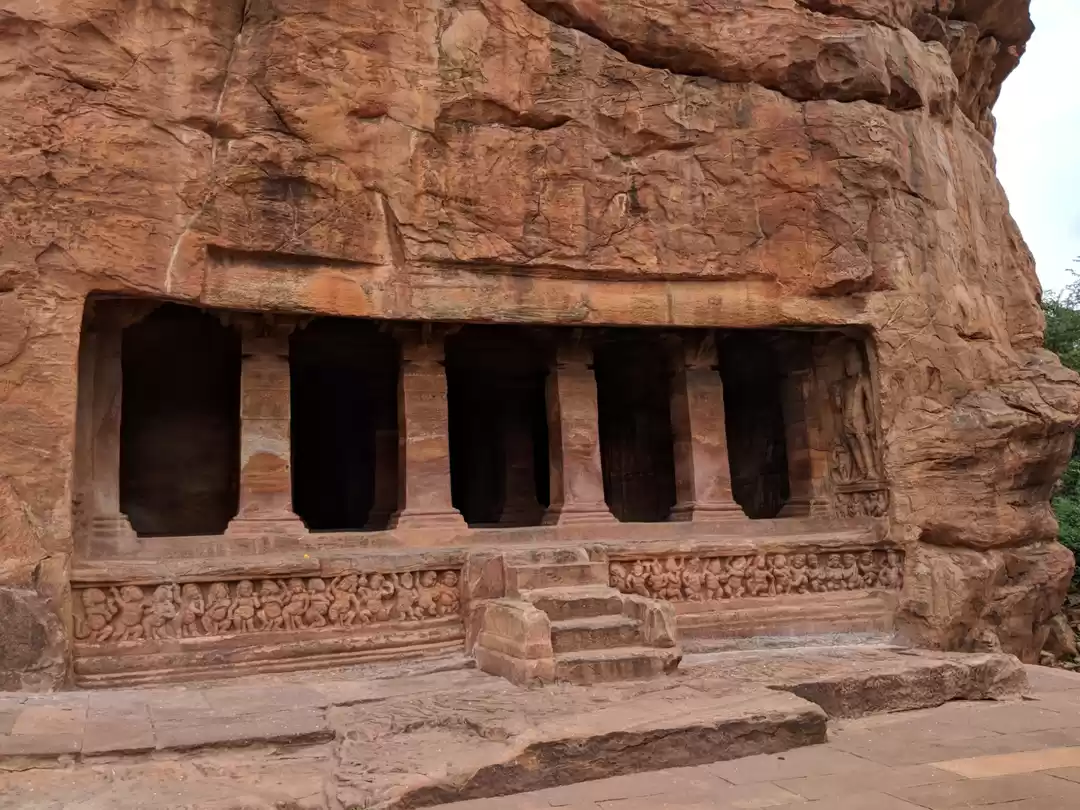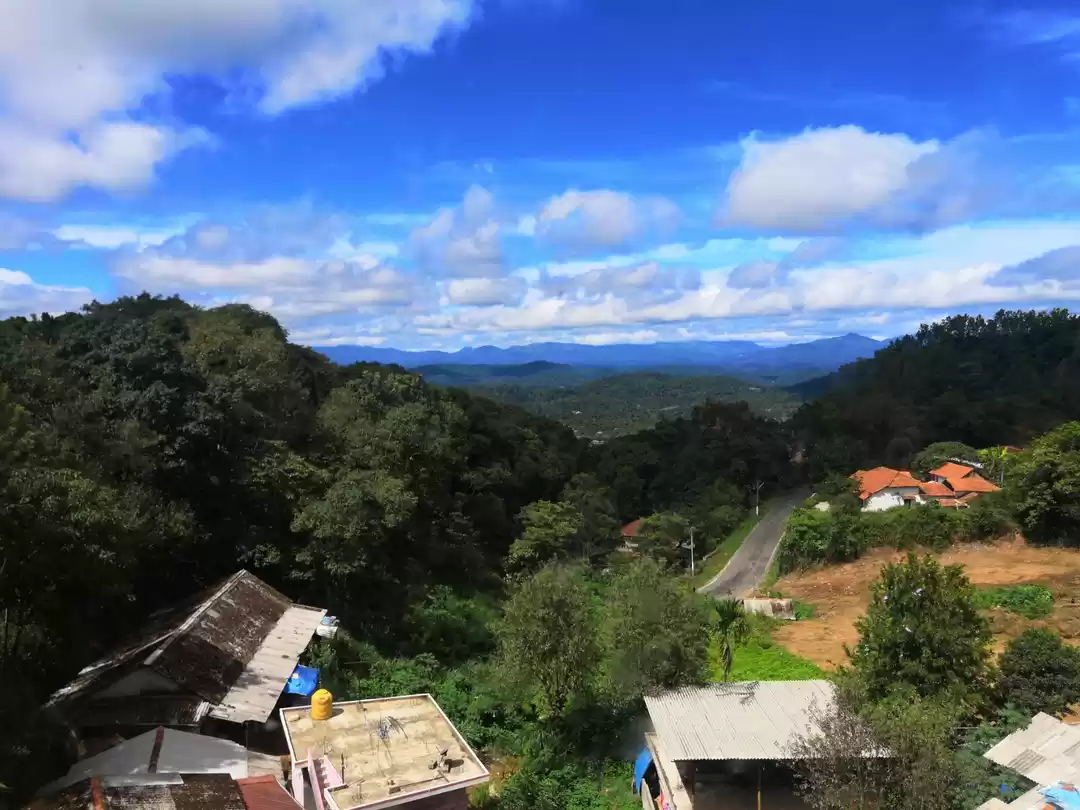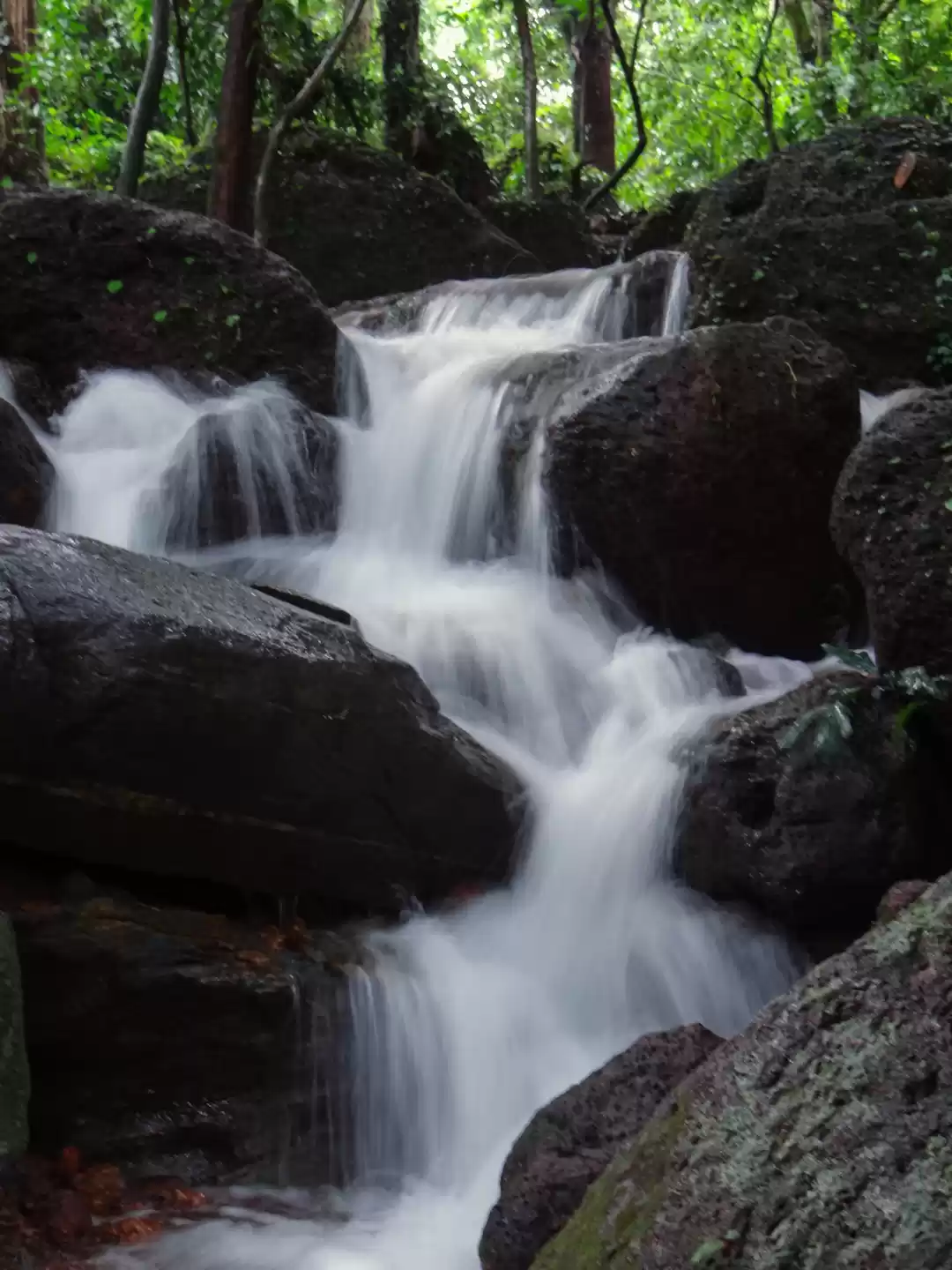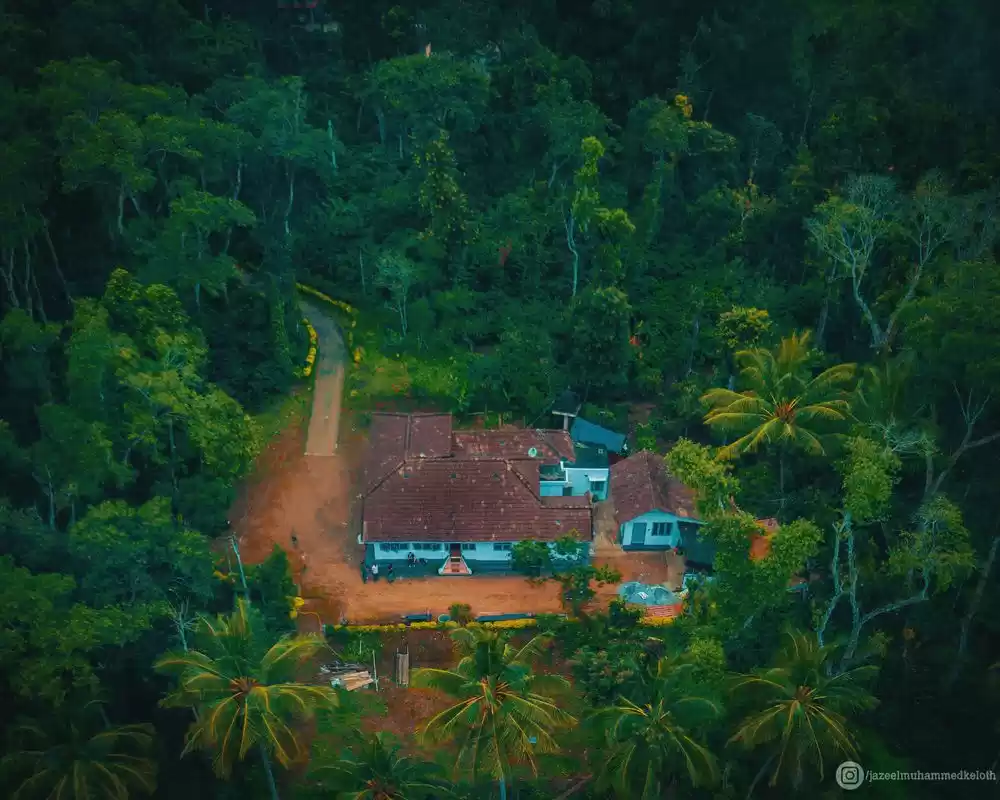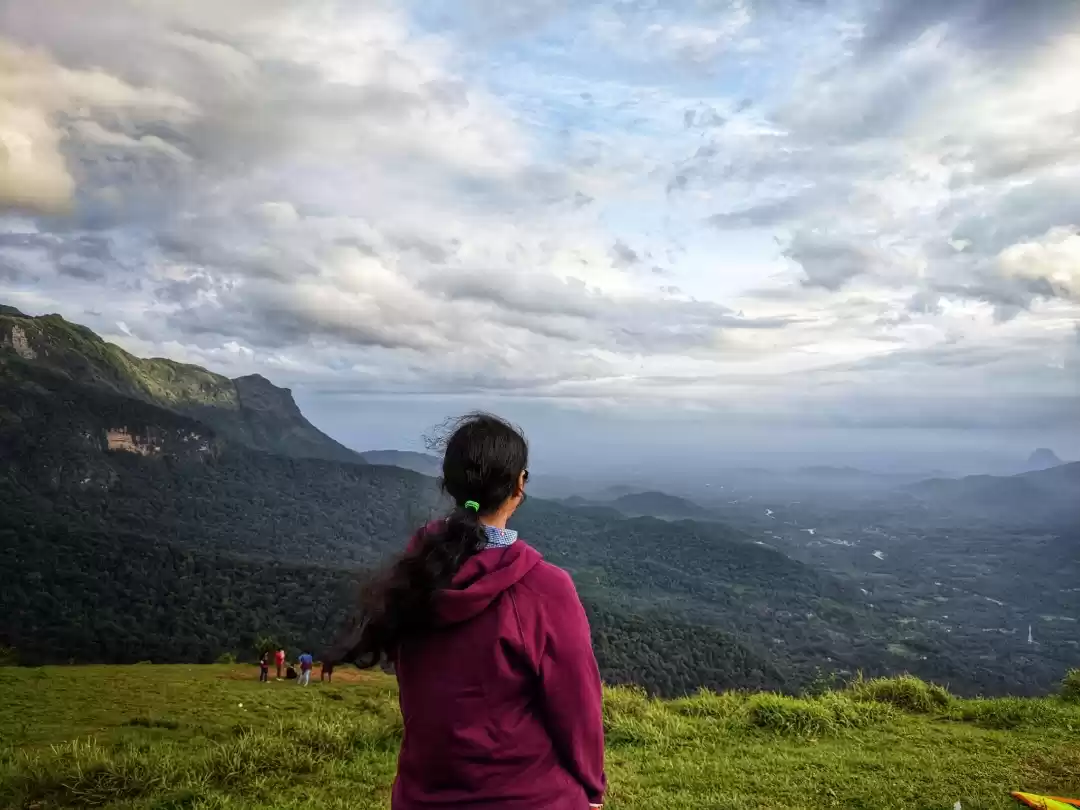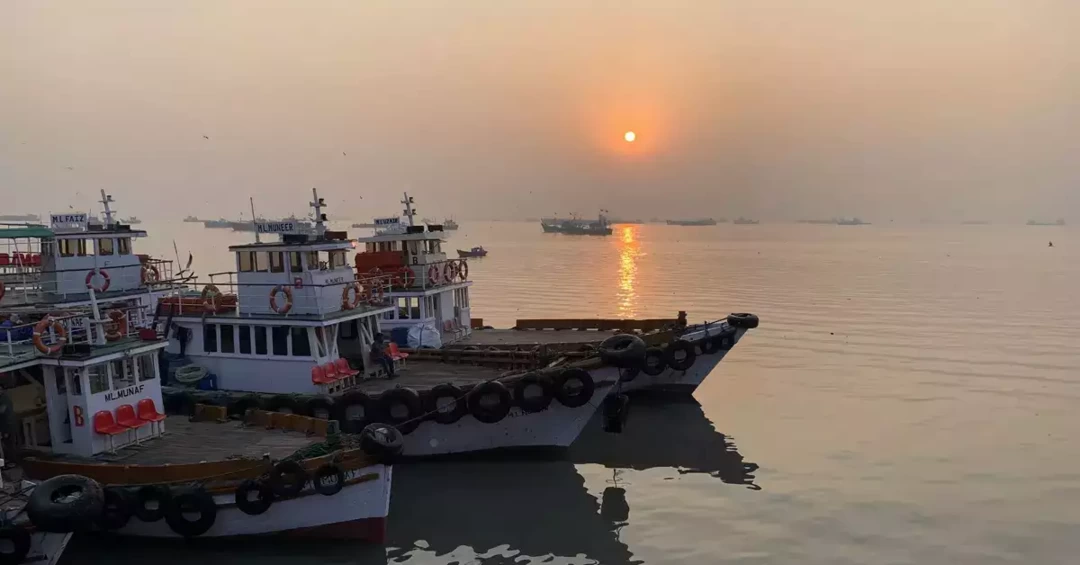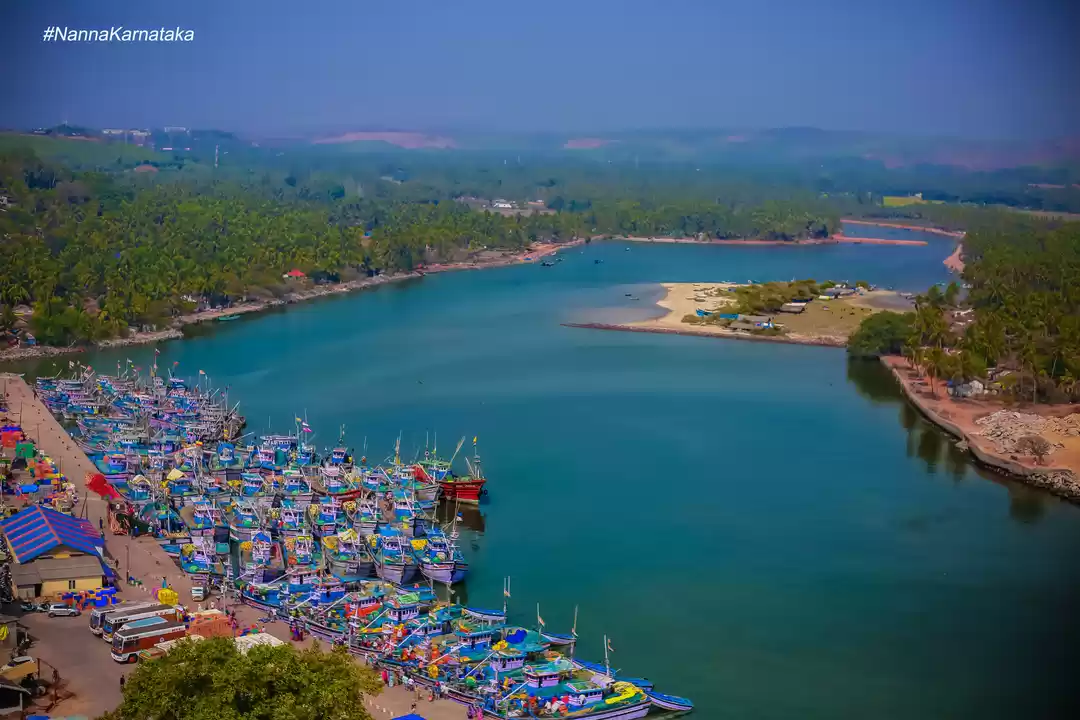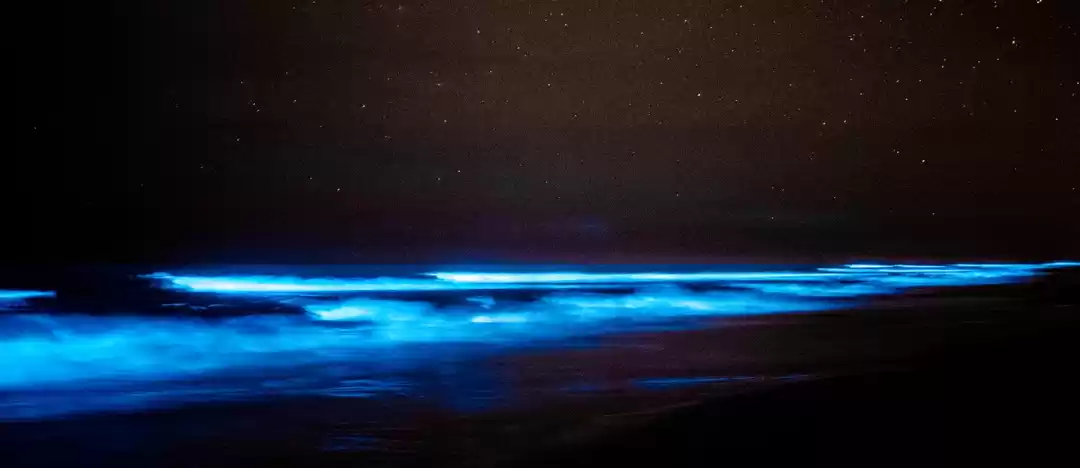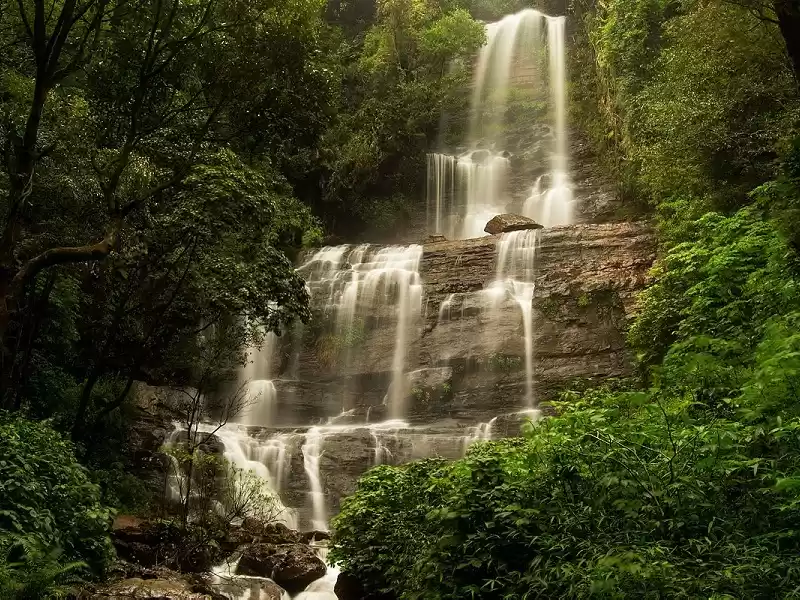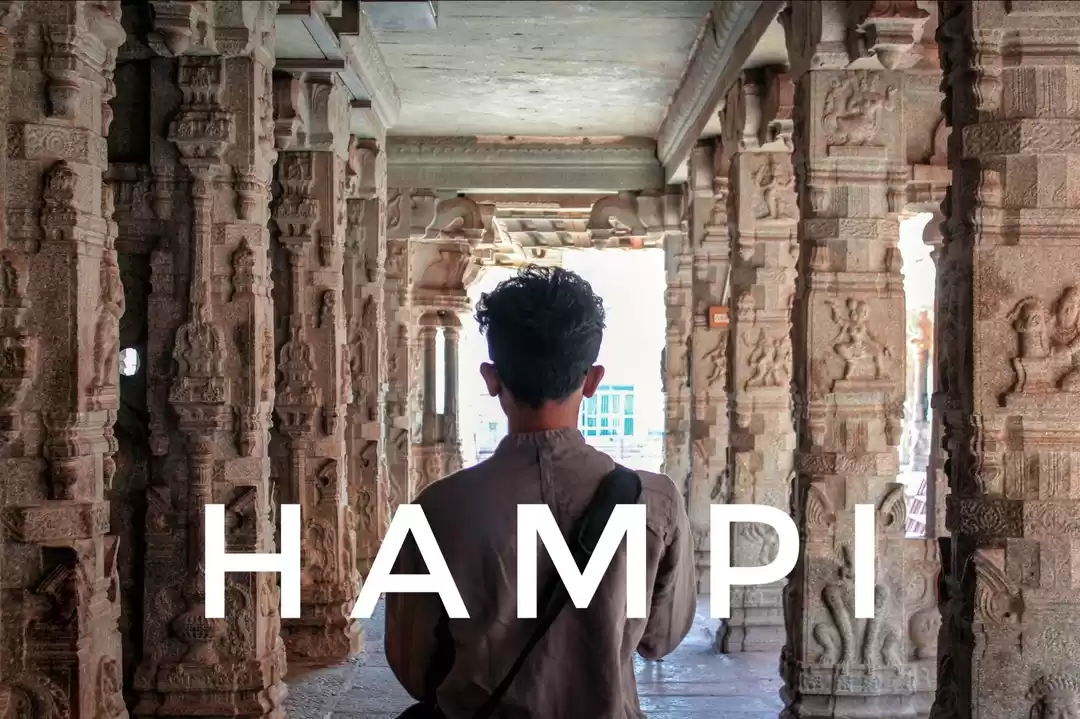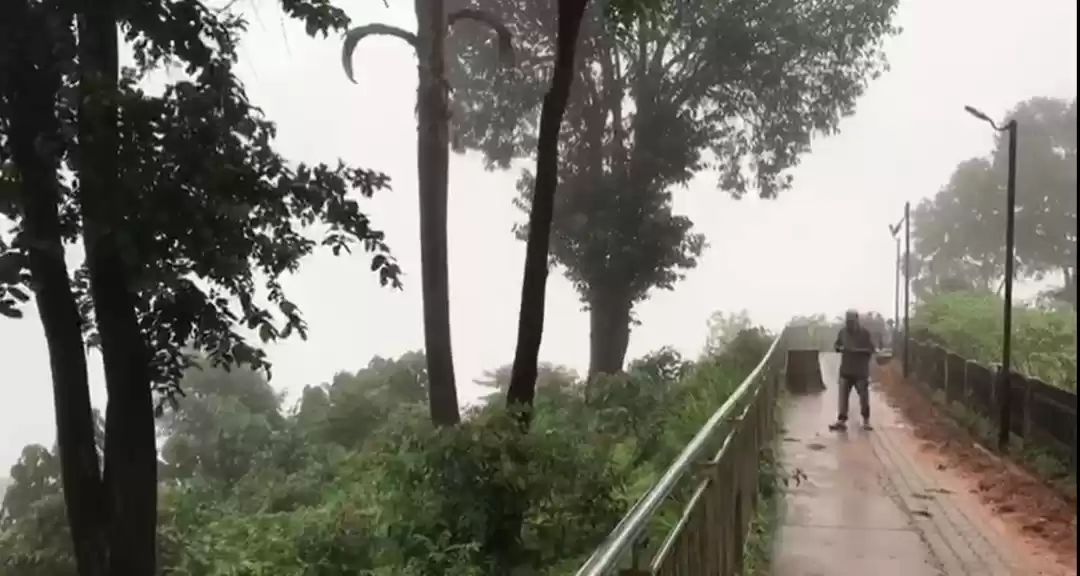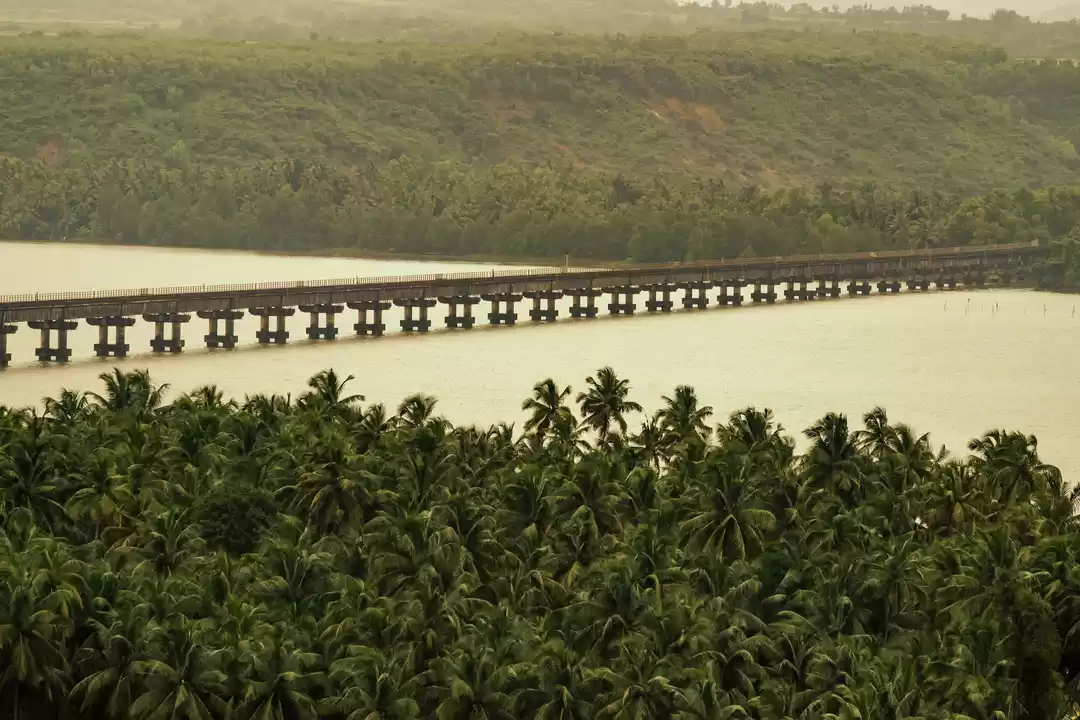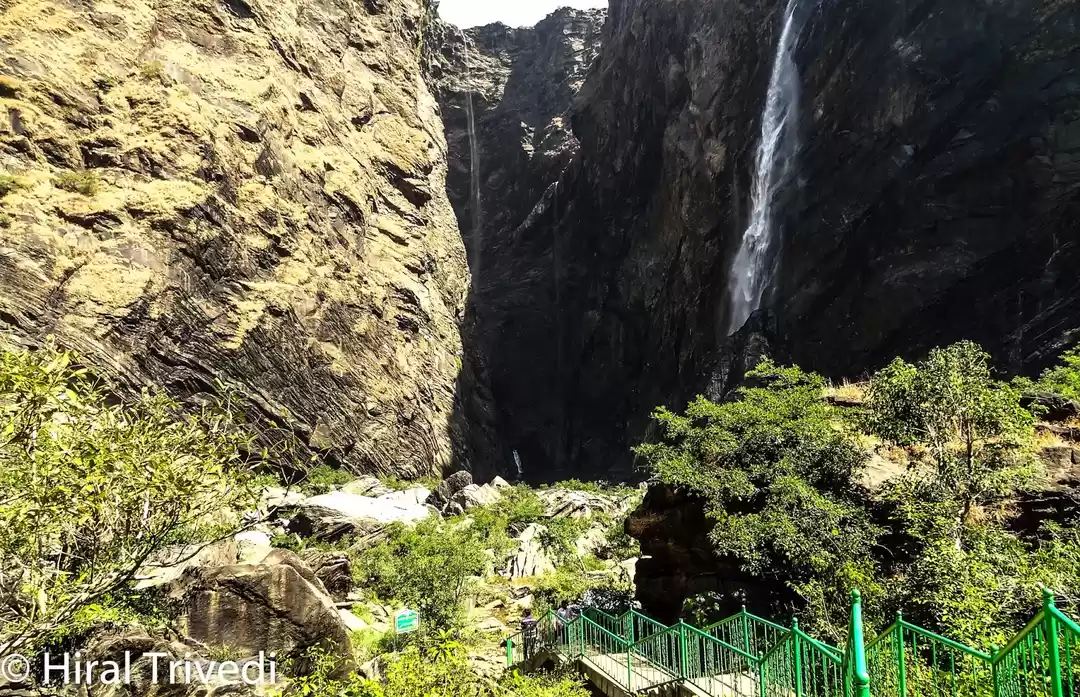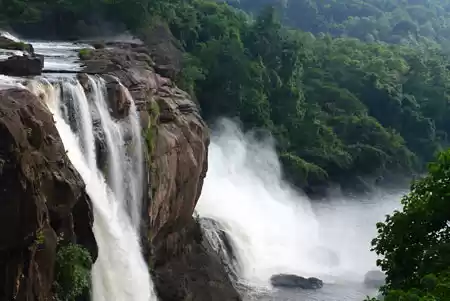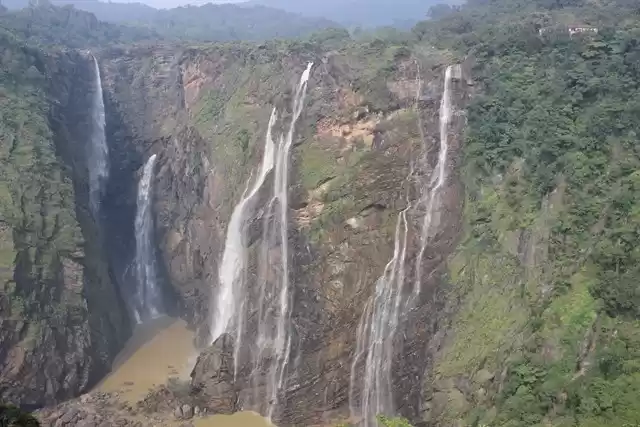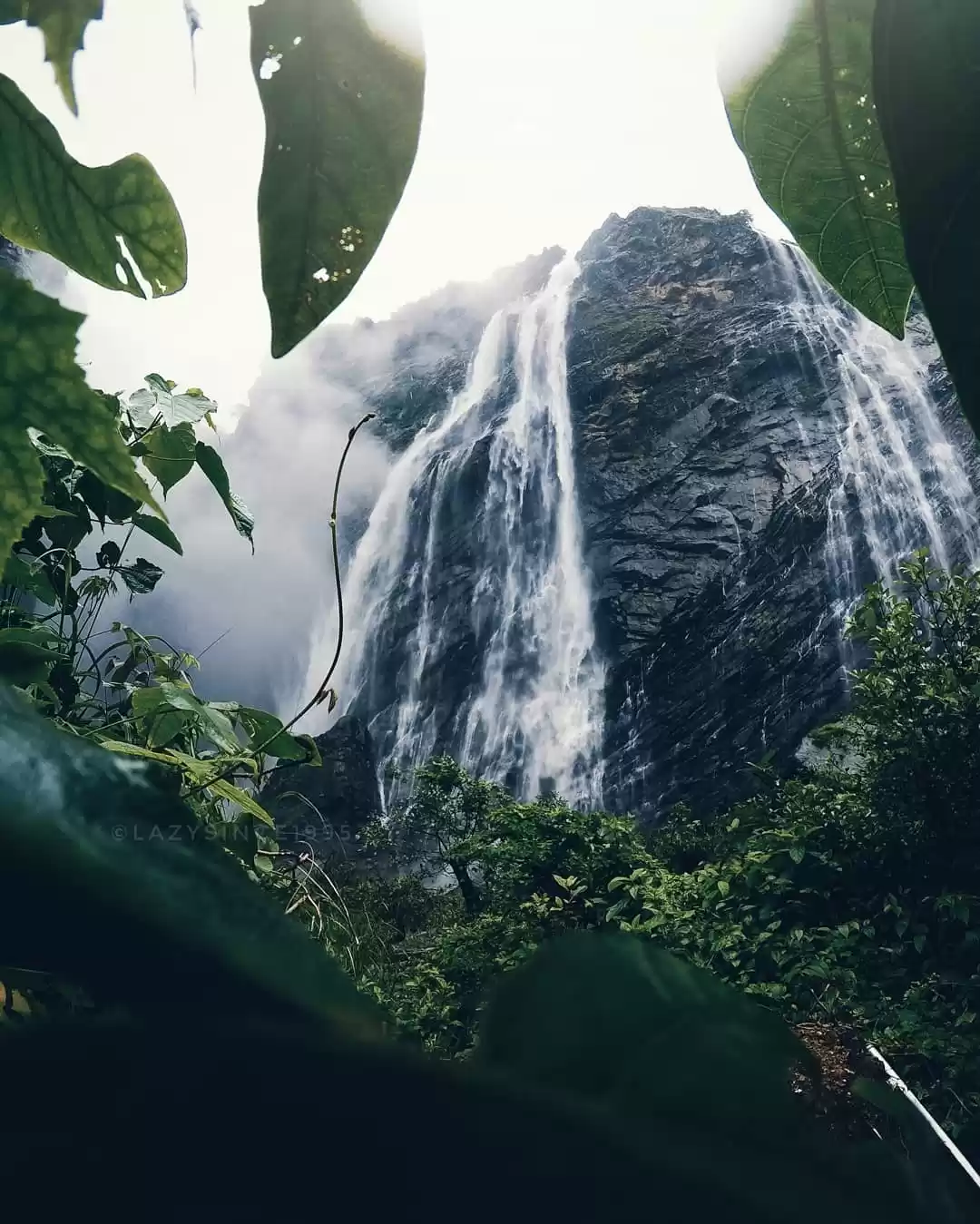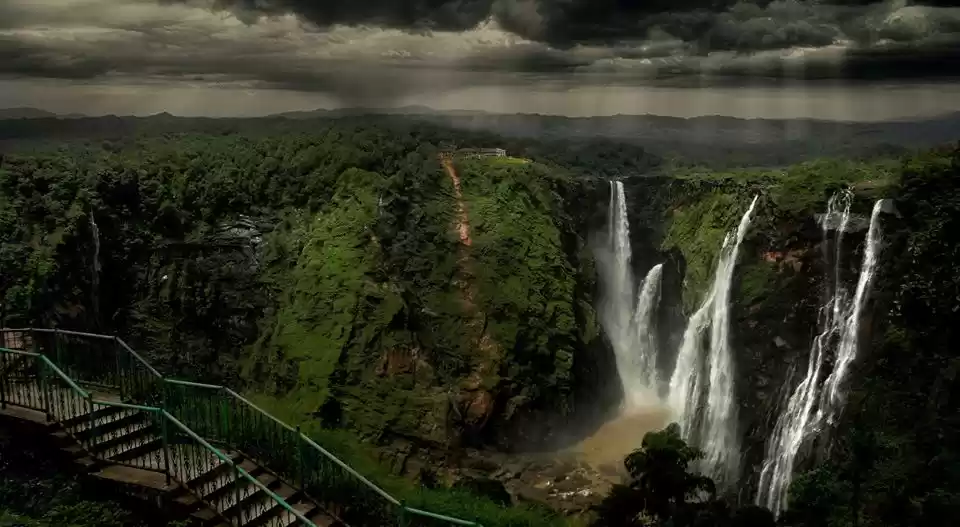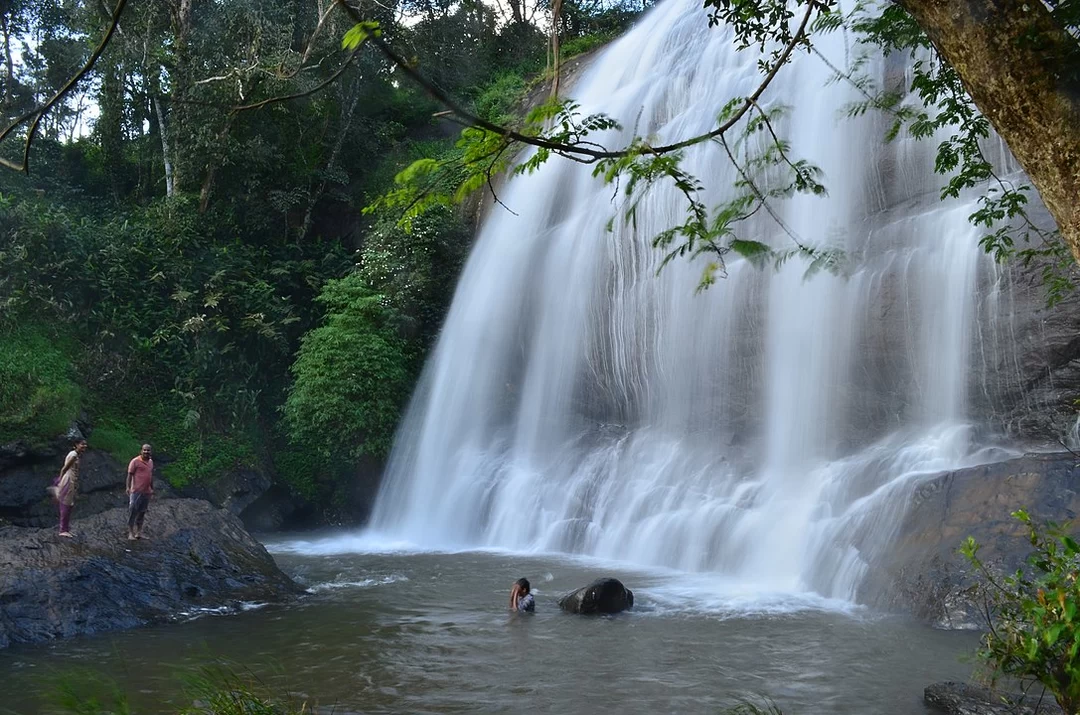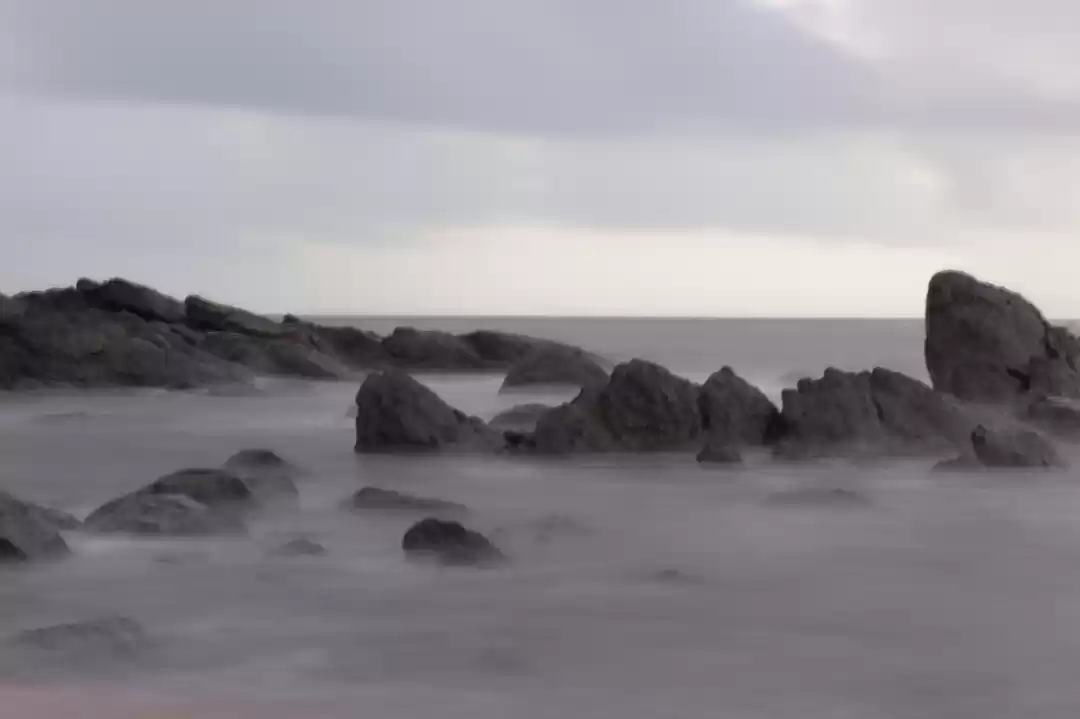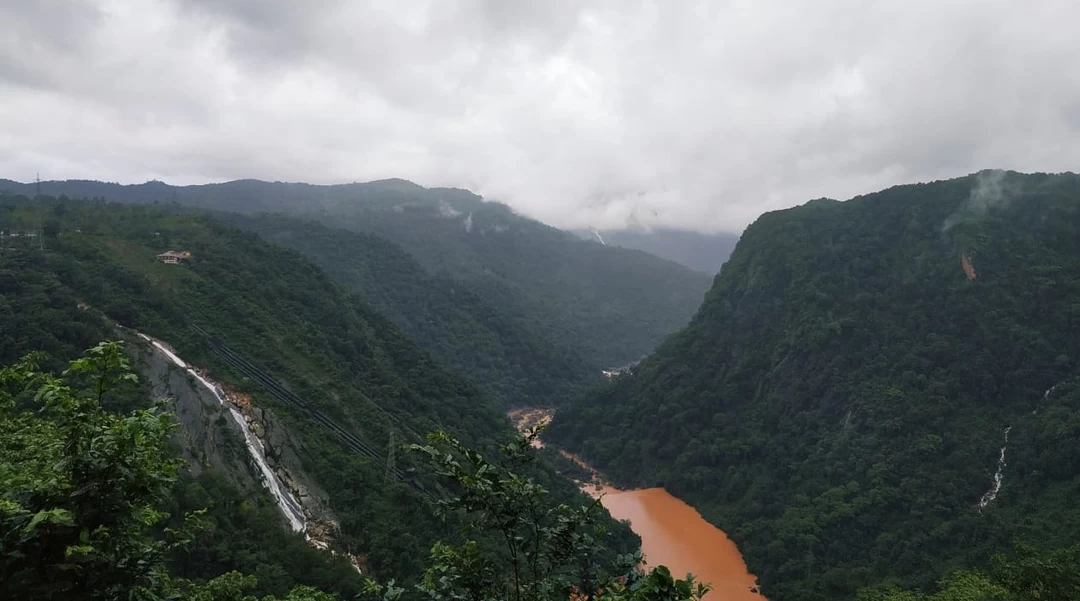Jog Falls is waterfall by the Sharavati dropping 253 m (830 ft), making it the third-most noteworthy cascade in India after the Nohkalikai Falls with a drop of 335 m (1,099 ft) in Meghalaya and Dudhsagar Waterfalls with a drop of 310 m (1,020 ft) in Goa.

Sharavathi, a waterway which ascends at Ambutirtha, close to Nonabur, in the Thirthahalli taluk and takes the northwesterly course by Fatte petta, gets the Haridravati on the right beneath Pattaguppe and the Yenne Hole on the left above Barangi. On showing up at the boondocks it twists toward the west, accelerates itself down the Falls of Gersoppa, and passes that town (appropriately Geru-Sappe), which is approximately 30 kilometers (19 mi) far off, releasing into the Arabian ocean at Honnavar in Uttara Kannada.
The Sharavati, streaming over an extremely rough bed around 250 yards (230 m) wide, here arrives at a colossal abyss, 290 m (950 ft) profound, and the water descends in four unmistakable falls.The Raja Fall pours in one solid section sheer to the profundity of 250 m (830 ft). Mostly down it is experienced by the Roarer, another fall, which encourages itself into an immense cup and afterward surges brutally downwards to meet the Raja. A third fall, the Rocket, shoots downwards in a progression of planes; while the fourth, the Rani, moves unobtrusively over the mountainside in a sheet of froth. The Tourism Department has assembled ventures from the perspective to the lower part of the slope where the cascade can be seen at the contrary side. There are roughly 1400 stages worked to arrive at the lower part of the slope.
Related with the cascade is the close by Linganamakki Dam across the Sharavati River. The force station has been functional since 1948 and is of 120 MW limit, one of the biggest hydroelectric stations in India around then and a little wellspring of electric force for Karnataka now. The force station was recently named Krishna Rajendra hydro-electric venture, after the King of Mysore around then. The name was subsequently changed to Mahatma Gandhi Hydro-electric Project. It was served by The Hirebhaskara dam until 1960. After 1960, because of the thoughts of Mokshagundam Visvesvarayya, Linganmakki Dam has been utilized for power age.
The hydro-electric task was brought about by the public authority of Mysore in mid-1943. A plan to create 64,000 torque at an expense of ₹358 lakh was planned. The Power House on the right bank of the Gerusoppa dam comprises of four Francis-type turbines coupled to the creating units of 60 MW each. The units are arranged to work at a plan head of 47.5 mtrs. An outside switchyard is situated between the toe of the dam and the force to be reckoned with. Force from the outside yard is cleared through a 220 KV twofold circuit transmission line associated with the state matrix at Talaguppa.
The limit was expanded consequently and presently produces 240 MW of force.
We visited Jog Falls during monsoon season which is considered as best time to visit. We can visualize the beauty of the breathtaking waterfall only during monsoon which is amazing to see.
Also Read : Other Places to Visit in Shivamogga



